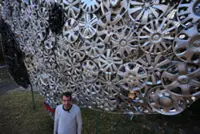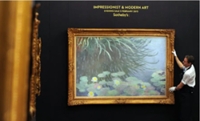A shot of a fisherman heading out to sea - off the Penang waters of Tanjung Tokong - at daybreak. Photos: JEDI, Antoine Loncle and Prestine Davekhaw
Being part island and part coastal territory, Penang naturally derives a significant portion of its food supply from the sea.
Before there was aquaculture on an industrial scale, most of the marine harvests came from small-scale fisherfolk who combed territorial waters on a daily basis.
But despite bringing food to people’s tables, the efforts of such communities are largely overlooked or taken for granted. An insightful photo exhibition titled Belong sought to change that.
Held at COEX Kilang Besi in Hin Bus Depot, George Town, last month, it featured around 30 images by local photographers Antoine Loncle and Prestine Davekhaw.
Their works opened a window into the lives and struggles of the state’s coastal fishing communities, laying bare the realities and labour they went through every day to feed people and also themselves.
It also underscored the connection such communities shared with the sea, as well as the indispensable role they play in ensuring Penang’s food security.
The project started in May last year and lasted several months. Loncle and Davekhaw made numerous visits to five fishing villages around the island and spent many hours getting to know the fisherfolk, oftentimes following them out to sea on rickety old boats.
“As a photographer who loved the sea, this was a dream assignment. The communities were welcoming and the locations picturesque," said Loncle, 28, who is of French and Eurasian heritage.
“But after seeing what the fishermen and women had to go through just to catch small amounts of fish, it felt bittersweet,” he added.
Davekhaw, 32, discovered just how physically demanding the fisherfolks’ daily routines were. Particularly with Penang’s unpredictable weather.
“Rain could come at any time and they cannot simply turn back on a whim due to their nets. Sometimes the weather prevents them from going out for days or weeks. So for us to do the project, we had to take advantage of every opportunity. I had to manage seasickness while protecting my camera equipment from the seawater," she said.
Davekhaw was struck by how close-knit the communities were. In Tanjung Tokong, she met a fisherwoman called Vivi who had lived there all her life and knew everybody in the area by name.
She also came across a fisherman who goes out to sea on a flimsy hand-built canoe, because he could not afford a proper boat nor the fuel to run a motor.
Showing the public such lesser-known aspects of the fishing community was one of their aims, as well as that of the show’s co-organisers – the Pertubuhan Jaringan Ekologi dan Iklim (JEDI).
The latter is an NGO that advocates the rights of people to a safe, healthy and sustainable environment by promoting climate change awareness and environmental protection.
One of the biggest issues Penang’s fisherfolk currently face is development and land reclamation – which drastically impacts marine stocks and in turn, threatens their livelihoods.
Loncle said he could sense the frustration and disappointment of the fishing communities in areas like Gertak Sanggul and Tanjung Tokong, which are among the fastest developing coastal areas on the island.
Davekhaw said, “Society tends to overlook this and often unfairly expect fisherfolk to simply switch to another profession. But that’s not always realistic, as for many, it’s the only thing they know.”
Loncle added, “Most people seldom give a second thought to where their food comes from. By highlighting the plight of the fisherfolk, we hope the public would be better informed about their food and the efforts required to produce or acquire it.
“Many of the fisherfolk we spoke to sell their catch to nearby towns at affordable rates. Without them, the supply of cheap seafood to these areas would be affected.”
He was also disheartened that the traditional fisherfolk – who have harvested Penang’s waters for centuries and are part of its intangible cultural heritage – could one day be a thing of the past.
“Many of these fishermen and women are the last of their kind. Their children are not keen on continuing the profession due to the hardships and challenges involved.
“Their declining numbers also paint a worrying picture for the state’s food security. Penang is beautiful and its seas bountiful. It would be sad if we reached a point where we’d have to import our seafood from elsewhere,” concluded Loncle.












